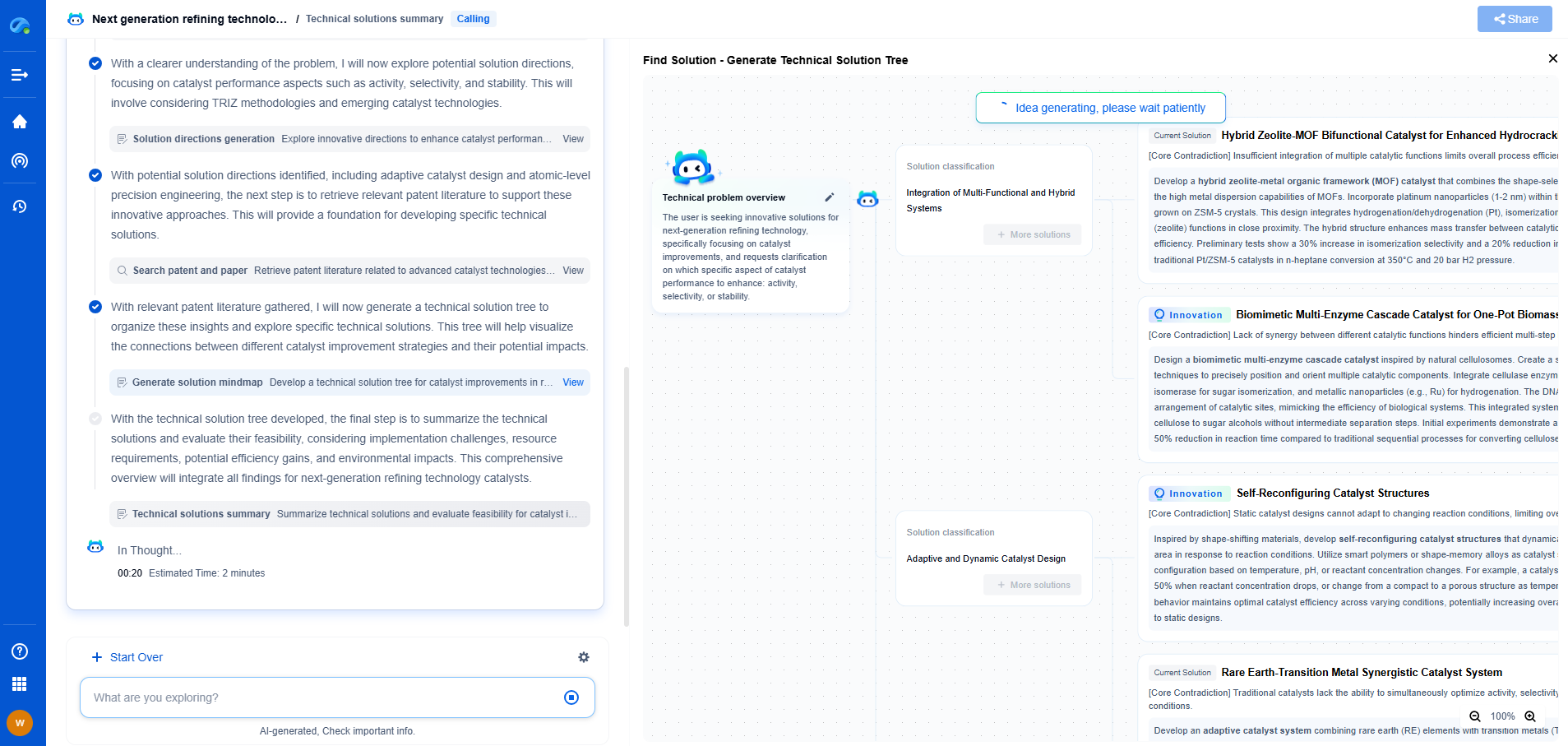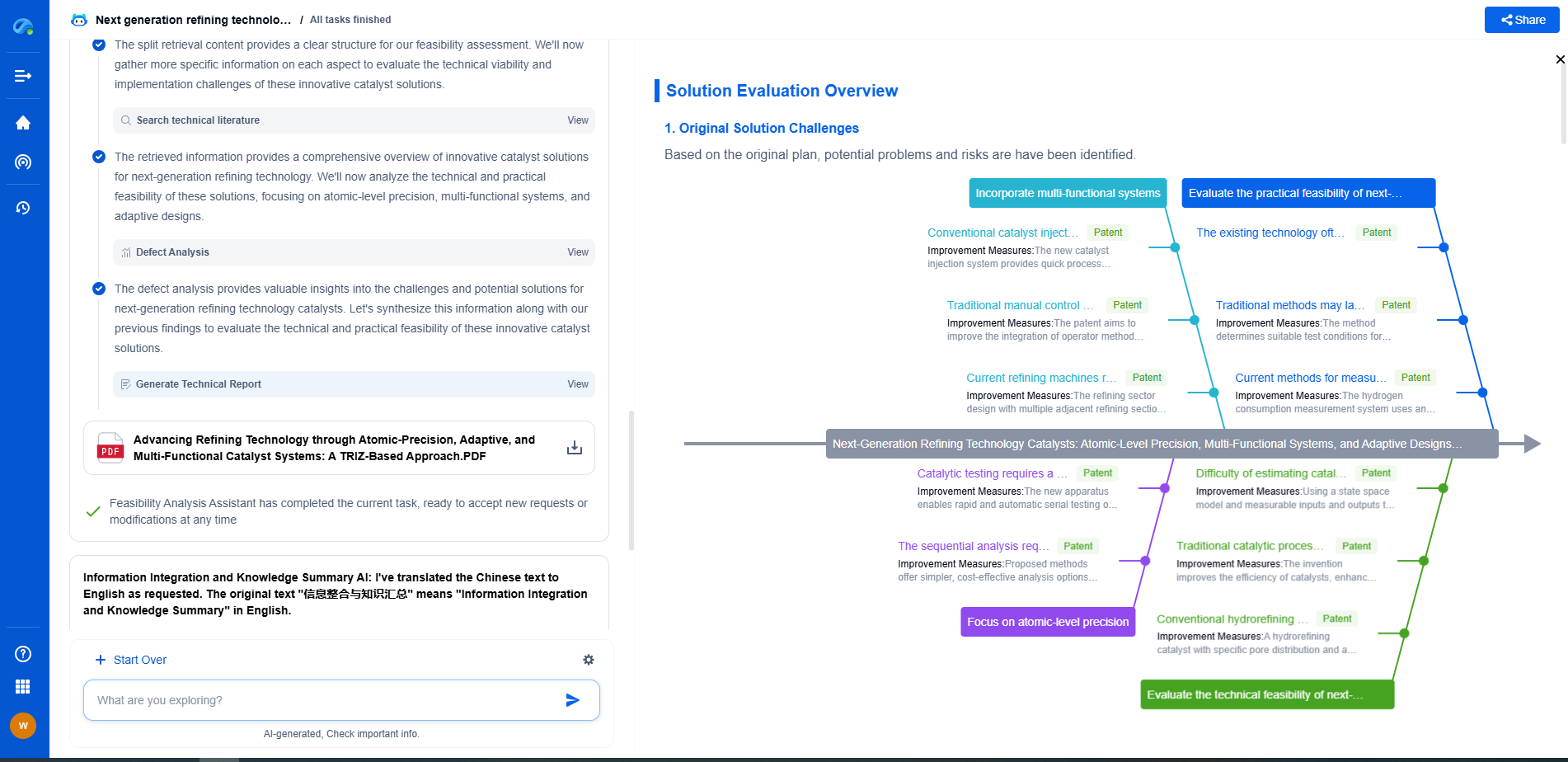The role of digital simulation in meeting gear compliance standards
JUL 2, 2025 |
Understanding Gear Compliance Standards
In any industry that relies on precision engineering, compliance standards are established to ensure that gear components operate efficiently and safely. These standards cover various aspects, including material properties, dimensional accuracy, and performance under different load conditions. Compliance with these standards is not just about satisfying regulatory requirements; it is also crucial for maintaining product reliability and brand reputation.
The Traditional Challenges
Traditionally, meeting gear compliance standards involved extensive physical testing and prototyping. Physical prototypes are built and subjected to rigorous testing to simulate real-world operating conditions. This iterative process, while effective, is often time-consuming and costly. Any errors discovered during physical testing require redesign and re-manufacture, leading to increased production costs and time-to-market delays. Moreover, physical testing can sometimes fail to capture the full spectrum of operating conditions, potentially compromising the gear's real-world performance.
Digital Simulation: A Game Changer
Digital simulation addresses many challenges associated with traditional testing methods. Using advanced computational tools, manufacturers can create detailed virtual models of gear systems. These simulations allow for comprehensive analysis and testing in a virtual environment, significantly reducing the need for physical prototypes.
One of the key advantages of digital simulation is its ability to provide early insights during the design phase. Engineers can simulate various operating conditions, such as different load scenarios and environmental factors, to predict how gears will perform. This predictive capability allows for optimization of designs before any physical component is manufactured, thus reducing the risk of costly redesigns later in the process.
Enhancing Precision and Efficiency
Digital simulations are highly precise, allowing for detailed analysis of stress distribution, deformation, and thermal behavior. This detailed insight helps engineers make informed decisions about material selection, geometric tolerances, and other design parameters, ensuring that the final product meets compliance standards.
Moreover, simulations enable engineers to explore a wider range of design iterations in a shorter time frame, leading to more innovative solutions. By accelerating the design and testing phases, digital simulation contributes to faster time-to-market without compromising on quality or compliance.
Cost Reduction and Sustainability
By minimizing the need for physical prototypes, digital simulation significantly reduces material waste and energy consumption associated with traditional testing methods. This reduction in resource usage not only lowers production costs but also aligns with sustainability goals, which are becoming increasingly important in the manufacturing industry.
Additionally, the ability to detect and rectify potential issues early in the design process further contributes to cost savings. Manufacturers can avoid expensive late-stage modifications and reduce the risk of product recalls or failures, which could have serious financial and reputational repercussions.
Future Trends and Developments
As technology continues to advance, the capabilities of digital simulation tools are expected to grow. Integrating artificial intelligence and machine learning algorithms into simulation processes can provide even deeper insights and automate certain aspects of design optimization. This integration holds the potential to further enhance the efficiency and accuracy of simulations.
Moreover, the rise of cloud computing offers the possibility of more collaborative and accessible simulation processes. Engineers from different parts of the world can collaborate in real-time, sharing insights and making instantaneous adjustments to virtual models, which can revolutionize the way gear systems are designed and tested.
Conclusion
The role of digital simulation in meeting gear compliance standards is undeniably transformative. By offering a faster, more cost-effective, and environmentally friendly alternative to traditional testing methods, digital simulation not only ensures compliance but also drives innovation and efficiency in gear design. As technology continues to evolve, the impact of digital simulation on the manufacturing industry will likely become even more profound, paving the way for smarter and more sustainable engineering solutions.
Boost Innovation in Gears & Transmissions with Patsnap Eureka
Whether you're designing a next-gen planetary gearbox or optimizing gear tooth profiles for noise reduction, keeping up with the fast-evolving landscape of mechanical transmissions requires more than just experience—it takes insight, speed, and smart tools.
Patsnap Eureka, our intelligent AI assistant built for R&D professionals in high-tech sectors, empowers you with real-time expert-level analysis, technology roadmap exploration, and strategic mapping of core patents—all within a seamless, user-friendly interface.
Whether you're streamlining a manual transmission system or exploring electromechanical actuation, Patsnap Eureka helps your team move from concept to novelty faster than ever.
👉 Experience Eureka in action—request a personalized demo today and see how AI can revolutionize your gear innovation workflows.
- R&D
- Intellectual Property
- Life Sciences
- Materials
- Tech Scout
- Unparalleled Data Quality
- Higher Quality Content
- 60% Fewer Hallucinations
Browse by: Latest US Patents, China's latest patents, Technical Efficacy Thesaurus, Application Domain, Technology Topic, Popular Technical Reports.
© 2025 PatSnap. All rights reserved.Legal|Privacy policy|Modern Slavery Act Transparency Statement|Sitemap|About US| Contact US: help@patsnap.com

